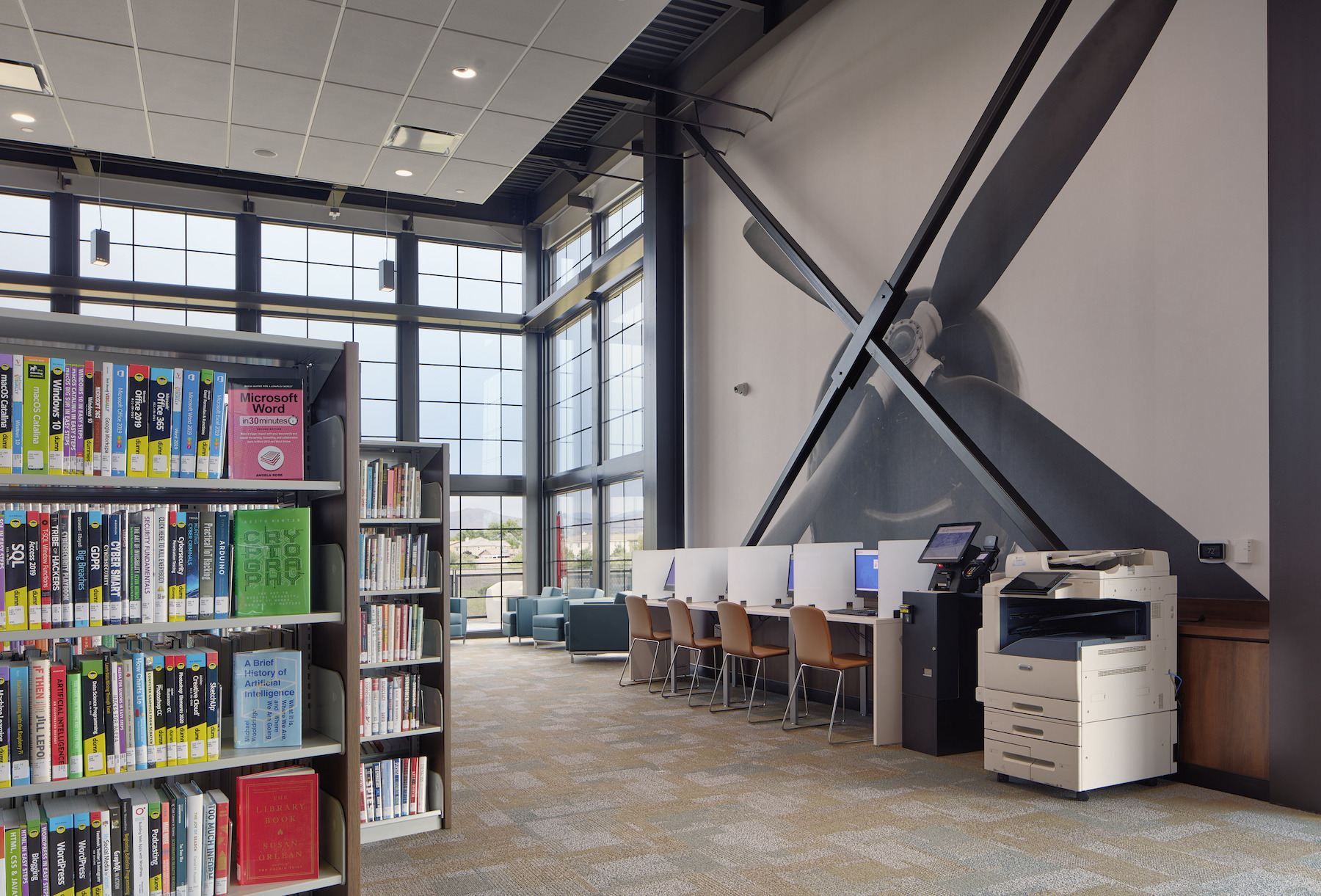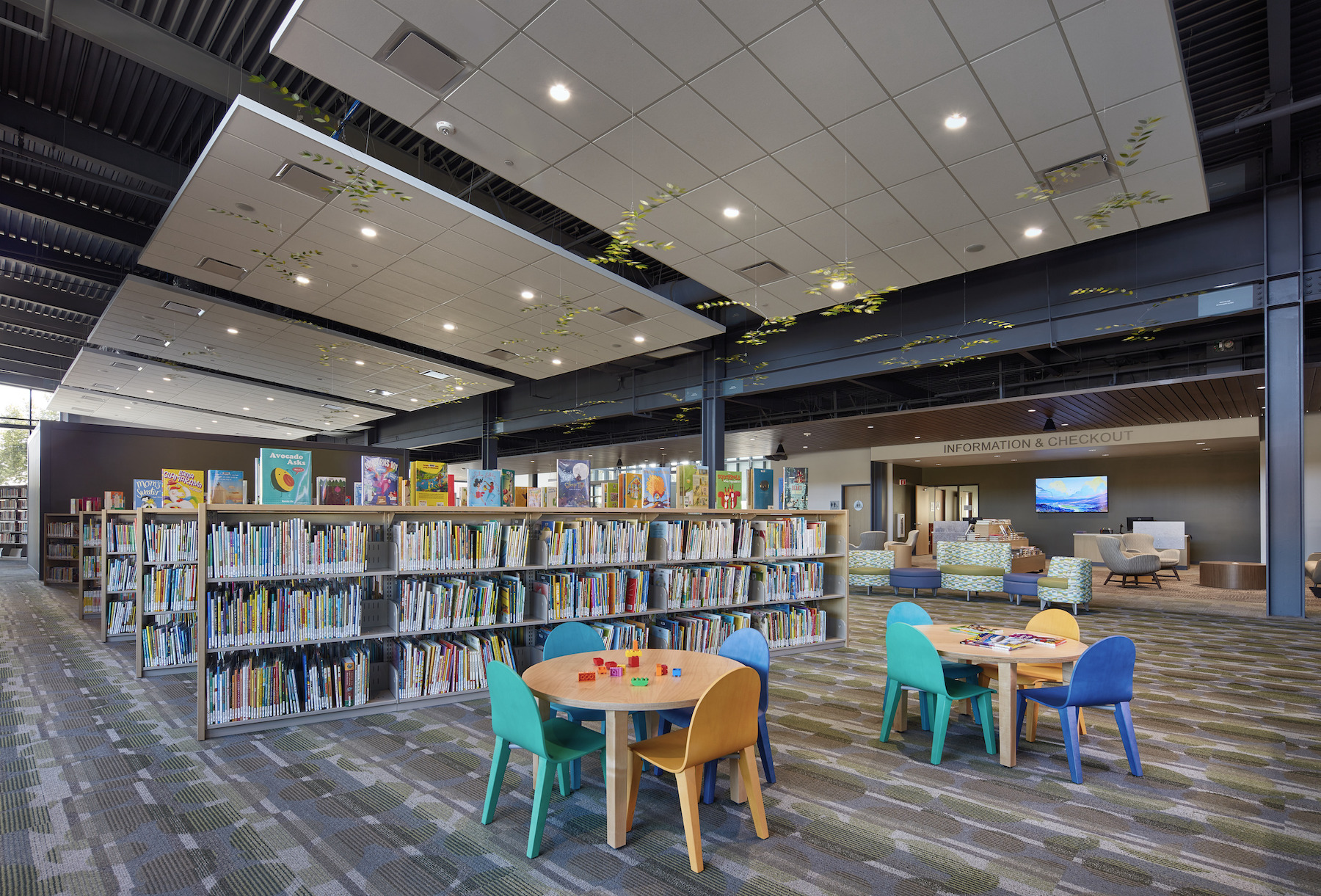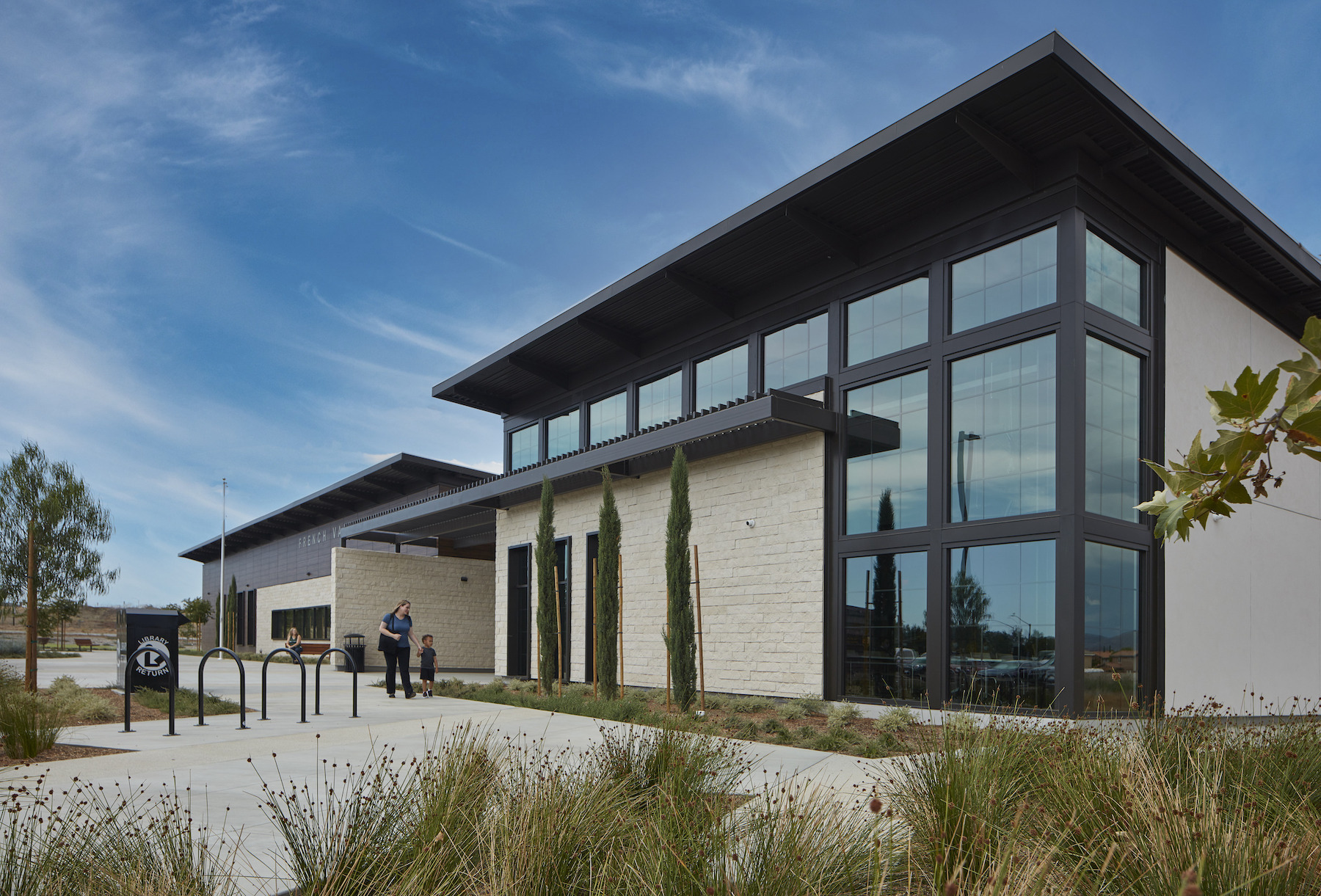Over the summer, a building team that included CannonDesign and McCarthy Building Companies completed three new libraries in Riverside County, Calif., that were built simultaneously in just 20 months under a $46 million public-private partnership contract that included a nonprofit specializing in funding P3 projects.
The three libraries—in Desert Hot Springs, Menifee, and French Valley—are now owned by Community Facility Public Private Partnerships (CFP3), a 501(c)(3) nonprofit that financed this project via tax-exempt bonds. Over the course of CFP3’s ownership contract, which can run up to 30 years, the County expects to save $25 million in debt service, operations, and maintenance costs. The installation of solar panels alone is expected to save $600,000.
As early as 2014, Riverside County—the fourth most-populous county in the state and the 10th most-populous in the U.S.—realized that its library system wasn’t keeping up with its growth. For example, at the time its existing 10,500-sf library in Menifee was serving 350,000 patrons. And that library’s location near a major roadway excluded expansion, according to a white paper about this project that CFP3 has published.
Back in the 1970s, the County’s Board of Supervisors approved the dedication of 1% of its general property tax for library services. But that wasn’t enough to build and maintain newer, larger branches.
P3 PRECEDENTS

Prior to its library contract, the County had done about 15 P3s for different building types that covered 1 million sf and $600 million of property. To envision how many new libraries it needed, the County’s Office of Economic Development, in partnership with Library Systems and Services (which since the 1990s had operated Riverside’s library system), hired Group 4, a South San Francisco firm that specializes in project planning for libraries and community centers.
In 2018, the Riverside County Library System created an RFP for three new libraries, and received a dozen proposals. The County, which approved this project a year later, determined that the best, and least expensive, course of action would be to hire one team for all three projects under a P3 contract structure.
There were several advantages to taking this route, not the least being that the project could move forward without as many public hearings, procurement protocols, and referendums that can add months to scheduling. And because CFP3 is a nonprofit, it would not be saddled with property taxes as the libraries’ owner. The interest it charged the County for the cost of the project, at between 3% and 3.5%, was less than half of the return on equity a private P3 entity would have expected.
WHAT PARTNERS BROUGHT TO THE TABLE


The partners in this P3 included Omni West Group, a development and property management firm, that came up with the libraries’ operational budget. CannonDesign created the blueprints for all three libraries that, while having different layouts, share similar attributes like children’s areas, tech centers, and community spaces.
McCarthy, which served as this project’s general contractor, was brought on board in part for its long-time relationships with local subcontractors, which prevented manpower-shortage delays. McCarthy assigned one project manager to monitor all three builds. CFP3 calculates that the design and construction of the libraries accounted for 20% of the total cost, with the rest going toward maintenance and operations.
During construction, there were some community concerns about the 25,000-sf library in French Valley, which opened July 31 and is the only one of the three located in a residential neighborhood. CFP3 states that these concerns were resolved with meetings and virtual fly-throughs of the building.
The new Menifee library opened July 24 at 20,000 sf, and was built to be an anchor for a larger retail development. The Desert Hot Springs library—the first of the three to open, on June 26—is 15,500 sf, and replaces a library that was only around one-fifth that size. “This library is a wonderful anchor for the community,” says Matthew Greiner, AIA, NCARB, Senior Vice President at CannonDesign. “It’s a home base for the wonderful people who live here. It’s where so many bright ideas and futures will be launched.”
Related Stories
| Jul 18, 2014
Top Engineering/Architecture Firms [2014 Giants 300 Report]
Jacobs, AECOM, Parsons Brinckerhoff top Building Design+Construction's 2014 ranking of the largest engineering/architecture firms in the United States.
| Jul 18, 2014
Top Engineering Firms [2014 Giants 300 Report]
Fluor, Arup, Day & Zimmermann top Building Design+Construction's 2014 ranking of the largest engineering firms in the United States.
| Jul 18, 2014
Top Architecture Firms [2014 Giants 300 Report]
Gensler, Perkins+Will, NBBJ top Building Design+Construction's 2014 ranking of the largest architecture firms in the United States.
| Jul 18, 2014
2014 Giants 300 Report
Building Design+Construction magazine's annual ranking the nation's largest architecture, engineering, and construction firms in the U.S.
| Jul 7, 2014
7 emerging design trends in brick buildings
From wild architectural shapes to unique color blends and pattern arrangements, these projects demonstrate the design possibilities of brick.
| Jul 2, 2014
Emerging trends in commercial flooring
Rectangular tiles, digital graphic applications, the resurgence of terrazzo, and product transparency headline today’s commercial flooring trends.
| Jun 30, 2014
Research finds continued growth of design-build throughout United States
New research findings indicate that for the first time more than half of projects above $10 million are being completed through design-build project delivery.
| Jun 18, 2014
Arup uses 3D printing to fabricate one-of-a-kind structural steel components
The firm's research shows that 3D printing has the potential to reduce costs, cut waste, and slash the carbon footprint of the construction sector.
| Jun 16, 2014
6 U.S. cities at the forefront of innovation districts
A new Brookings Institution study records the emergence of “competitive places that are also cool spaces.”
| Jun 12, 2014
Austrian university develops 'inflatable' concrete dome method
Constructing a concrete dome is a costly process, but this may change soon. A team from the Vienna University of Technology has developed a method that allows concrete domes to form with the use of air and steel cables instead of expensive, timber supporting structures.
















